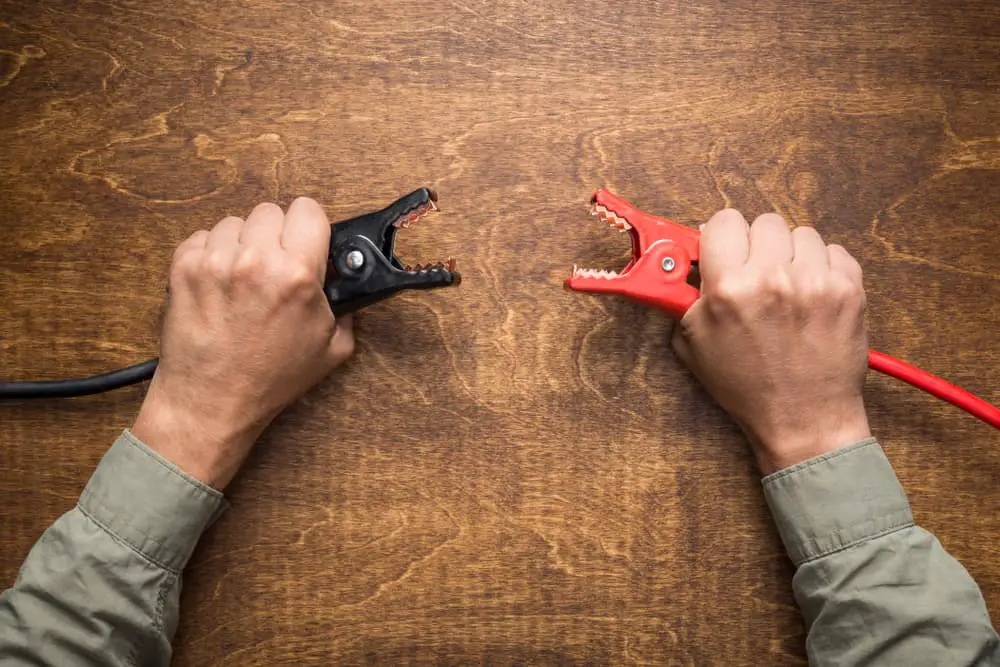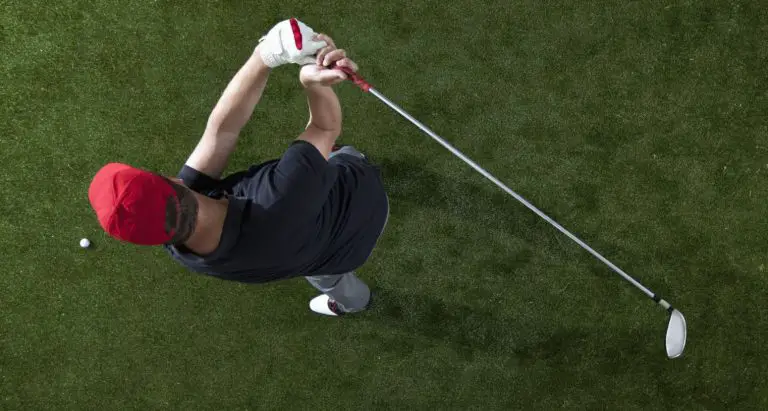How To Jumpstart A Golf Cart

Golf carts provide a convenient and efficient mode of transportation on the golf course and in various recreational settings. However, just like any vehicle, golf carts can experience battery issues that can leave you stranded. Knowing how to jumpstart a golf cart is a valuable skill that can save you time, money, and frustration.
In this comprehensive guide, we will walk you through the process of jumpstarting a golf cart, providing you with the knowledge and confidence to handle battery-related starting issues. From understanding golf cart batteries to gathering the necessary tools and equipment, we will cover each step in detail to ensure a successful jumpstart.
You will learn how to assess the situation, identify battery terminals, and connect the jumper cables correctly. We will also provide practical tips for preventing battery drainage, maintaining the battery’s health, and troubleshooting common issues that may arise during the jumpstarting process.
By following the guidelines outlined in this guide, you will be well-equipped to revive a dead golf cart battery and get your cart back on the move. So let’s dive in and learn how to jumpstart a golf cart like a pro!

Understanding Golf Cart Batteries
Golf cart batteries are unique and designed specifically for the power needs of these vehicles. Understanding the basics of golf cart batteries will help you troubleshoot issues and make informed decisions. Here’s what you need to know:
Golf carts typically use deep-cycle batteries, which are designed to provide a steady amount of power over an extended period. These batteries differ from standard automotive batteries, which are designed for quick bursts of power to start an engine.
Battery capacity refers to the amount of energy the battery can store. Golf cart batteries are commonly rated in ampere-hours (Ah). The higher the Ah rating, the longer the battery can provide power.
Voltage is another crucial factor. Most golf carts use a 12-volt battery system, although some may have 6-volt or 8-volt batteries. It’s important to match the voltage requirements of your golf cart.
Assessing the Situation
Before attempting to jumpstart your golf cart, it’s essential to assess the situation and ensure that the battery is the likely cause of the starting issue. Follow these steps:
- Check for loose connections or damaged cables. Inspect the battery terminals and cables for corrosion, looseness, or any visible damage. Tighten loose connections or replace damaged cables as necessary.
- If you’ve ruled out loose connections and damaged cables, try turning on the lights or accessories on the golf cart. If they work but the cart still won’t start, it’s likely a battery-related issue.
By systematically assessing the situation, you can confirm that the battery needs a jumpstart and proceed accordingly.
Gathering the Necessary Tools and Equipment
To jumpstart a golf cart, you’ll need the following tools and equipment:
| Tools and Equipment | Description |
|---|---|
| Jumper Cables | Obtain a set of heavy-duty jumper cables with sufficient length to reach from the jumpstart source to the golf cart. |
| Fully Charged 12-Volt Battery | Prepare a fully charged 12-volt battery as the jumpstart source. This can be a car battery or another suitable power source. |
| Safety Gear | Wear gloves and goggles to protect yourself from any potential sparks or battery acid. Safety should always be a top priority. |
| Wire Brush or Sandpaper | Keep a wire brush or sandpaper handy to clean any corrosion off the battery terminals. |
Having these tools readily available will make the jumpstarting process smoother and more efficient. Safety gear is particularly important to protect yourself during the procedure.
Identifying the Battery Terminals
Before connecting the jumper cables, you need to locate the battery terminals on your golf cart. Most golf cart batteries have clearly marked positive (+) and negative (-) terminals.
The positive terminal is usually identified by a red cover or markings, while the negative terminal is typically black. Take a moment to identify these terminals and familiarize yourself with their appearance and placement on the battery.
Preparing the Jumpstart Source
To jumpstart your golf cart, you’ll need a fully charged 12-volt battery as the jumpstart source. Here’s how to prepare it:
- Ensure that the jumpstart source battery is fully charged and in good working condition. Check the battery’s voltage to ensure it matches the voltage requirements of your golf cart.
- Position the jumpstart source vehicle or battery close to the golf cart, ensuring that the vehicles or batteries are not touching.
- Turn off the engine of the jumpstart source vehicle and set the parking brake. This precautionary step ensures safety and prevents any accidental movement during the jumpstarting process.
- Open the hood of the jumpstart source vehicle and locate its battery. If you’re using a standalone battery, ensure it is easily accessible.
- Clean the battery terminals of the jumpstart source. If there is any corrosion or buildup, use a wire brush or sandpaper to clean the terminals thoroughly. Clean terminals provide better conductivity for the jumpstart process.
Once you have prepared the jumpstart source, you are ready to proceed with connecting the jumper cables to jumpstart your golf cart.
Connecting the Jumper Cables
Connecting the jumper cables correctly is crucial for a successful and safe jumpstart. Follow these step-by-step instructions:
- Take one end of the jumper cables and attach the positive (+) clamp to the positive (+) terminal of the dead battery on the golf cart.
- Connect the other end of the positive (+) jumper cable to the positive (+) terminal of the jumpstart source battery.
- Moving to the jumpstart source vehicle or battery, attach the negative (-) clamp of the jumper cable to the negative (-) terminal of the battery.
- Here comes a pattern breaker! Before attaching the remaining end of the negative (-) jumper cable, pay attention to this important precaution: Do not connect the negative (-) clamp to the negative terminal of the golf cart battery. Instead, attach it to an unpainted metal surface of the golf cart’s frame or engine block, away from the battery. This grounding point helps prevent any potential sparks near the battery.
- Double-check that all connections are secure and ensure the jumper cables are away from any moving parts.
Now that the jumper cables are connected, you’re ready to jumpstart the golf cart and bring it back to life.
Jumpstarting the Golf Cart
Follow these steps to jumpstart your golf cart:
- Start the engine of the jumpstart source vehicle or, if using a standalone battery, ensure it is turned on.
- Allow the jumpstart source vehicle or battery to run for a few minutes to provide a sufficient charge to the dead golf cart battery.
- After a few minutes, attempt to start the golf cart. Turn the key or switch on the cart and listen for any signs of the engine trying to start.
- If the golf cart doesn’t start immediately, wait for a few more minutes and try again. In some cases, the dead battery may need a longer charge before it can power the cart.
- Once the golf cart starts successfully, carefully remove the jumper cables in reverse order, starting with the negative (-) clamp from the golf cart’s frame, then the negative (-) clamp from the jumpstart source, followed by the positive (+) clamp from both the jumpstart source and the golf cart’s battery.
By following these steps, you should be able to jumpstart your golf cart and get it back on the road or the green.
Allowing the Golf Cart to Recharge
Jumpstarting the golf cart provides a temporary solution to a battery issue. To ensure the longevity of your battery and prevent future starting problems, it’s important to allow the golf cart’s battery to recharge fully. Here’s what you need to do:
- Drive the golf cart for at least 30 minutes to an hour to allow the battery to recharge while in use. The continuous operation will help the battery regain its charge through the charging system of the golf cart.
- During the recharge period, avoid using any additional electrical accessories or lights on the golf cart. This will prioritize the battery’s recharging process.
- Opt for a terrain that allows for a smooth and uninterrupted ride, as continuous starting and stopping can put additional strain on the battery.
- Monitor the battery’s charge level during the drive. If the battery seems to be draining quickly or if the cart shows signs of decreased performance, it may indicate a deeper battery issue that requires further inspection or professional assistance.
By allowing the golf cart to recharge through extended driving, you give the battery the opportunity to regain its optimal charge and ensure reliable performance for future use.
Preventive Measures and Maintenance Tips
Taking proactive steps to prevent battery drainage and prolong the life of your golf cart battery can save you from frequent jumpstarting scenarios. Consider the following preventive measures and maintenance tips:
- Regularly inspect and clean the battery terminals: Check the battery terminals for any signs of corrosion, and clean them using a wire brush or sandpaper as needed. Corrosion can impede the battery’s performance and lead to starting issues.
- Keep the battery charged: If you don’t use your golf cart regularly, make sure to keep the battery charged. A battery maintainer or trickle charger can help maintain the battery’s charge during periods of inactivity.
- Avoid deep discharges: Try to avoid fully discharging the battery before recharging it. Deep discharges can shorten the battery’s lifespan. If possible, recharge the battery when it reaches around 50% capacity.
- Proper storage during winter or extended periods of inactivity: If you plan to store your golf cart for an extended period, take the necessary steps to store the battery properly. This may include fully charging the battery, disconnecting it, and storing it in a cool and dry place.
- Follow the manufacturer’s recommendations: Refer to your golf cart’s manual or contact the manufacturer for specific maintenance guidelines and recommended charging procedures. Different models and battery types may have specific requirements.
By incorporating these preventive measures into your golf cart maintenance routine, you can extend the lifespan of your battery and minimize the need for jumpstarting.
Troubleshooting Common Issues
While jumpstarting a golf cart can often resolve starting problems, there may be instances where further troubleshooting is required. Here are some common issues you may encounter and possible solutions:
- Golf cart still doesn’t start: If jumpstarting doesn’t resolve the issue, it may indicate a more significant problem, such as a faulty ignition switch, solenoid, or motor. Consult a professional technician for further diagnosis and repairs.
- Battery repeatedly loses charge: If your battery consistently loses charge quickly or struggles to hold a charge, it may be reaching the end of its lifespan. Consider replacing the battery with a new one.
- Corrosion on battery terminals: If you notice persistent corrosion on the battery terminals despite regular cleaning, it may indicate a more significant electrical issue. Seek professional assistance to identify and resolve the underlying problem.
- Intermittent starting issues: If the golf cart starts intermittently or exhibits inconsistent starting behavior, check the wiring connections, switches, and fuses for any loose connections or damage. Repair or replace any faulty components as needed.
If you encounter any of these issues or any other persistent problems, it’s best to consult a golf cart technician who can diagnose the specific issue and provide appropriate solutions.
Conclusion
Knowing how to jumpstart a golf cart is a valuable skill for any golf cart owner. By understanding the basics of golf cart batteries, assessing the situation, gathering the necessary tools, and following the correct steps for jumpstarting, you can get your golf cart back on track. Remember to prioritize safety by wearing protective gear and following proper procedures.
Additionally, taking preventive measures such as regular battery maintenance, avoiding deep discharges, and proper storage can help prevent starting issues and prolong the life of your golf cart battery. If you encounter persistent problems or issues that cannot be resolved through jumpstarting, it’s advisable to seek professional assistance to diagnose and address any underlying electrical or mechanical problems.
By being proactive and knowledgeable about your golf cart’s battery system, you can ensure a reliable and enjoyable experience on the golf course or wherever your cart takes you.
Now that you have a comprehensive understanding of how to jumpstart a golf cart, put this knowledge into practice and confidently handle any starting issues that may arise. Enjoy your time on the greens with a reliable and fully functional golf cart!





